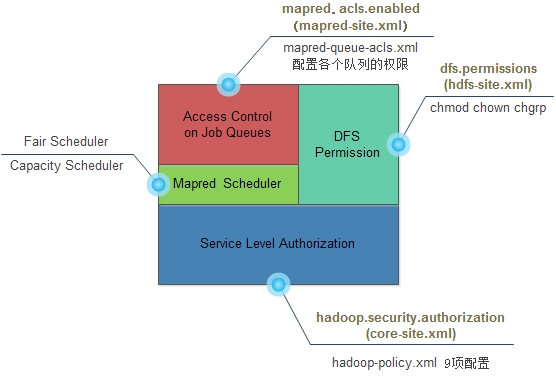一、定义
位图法就是bitmap的缩写。所谓bitmap,就是用每一位来存放某种状态,适用于大规模数据,但数据状态又不是很多的情况。通常是用来判断某个数据存不存在的。在STL中有一个bitset容器,其实就是位图法,引用bitset介绍:
A bitset is a special container class that is designed to store bits (elements with only two possible values: 0 or 1,true or false, ...).The class is very similar to a regular array, but optimizing for space allocation: each element occupies only one bit (which is eight times less than the smallest elemental type in C++: char).Each element (each bit) can be accessed individually: for example, for a given bitset named mybitset, the expression mybitset[3] accesses its fourth bit, just like a regular array accesses its elements.
二、数据结构
unsigned int bit[N];
在这个数组里面,可以存储 N * sizeof(int) * 8个数据,但是最大的数只能是N * sizeof(int) * 8 - 1。假如,我们要存储的数据范围为0-15,则我们只需要使得N=1,这样就可以把数据存进去。如下图:
数据为【5,1,7,15,0,4,6,10】,则存入这个结构中的情况为
三、相关操作
1,写入数据
定义一个数组: unsigned char bit[8 * 1024];这样做,能存 8K*8=64K 个 unsigned short 数据。bit 存放的字节位置和位位置(字节 0~8191 ,位 0~7 )比如写 1234 ,字节序: 1234/8 = 154; 位序: 1234 &0b111 = 2 ,那么 1234 放在 bit 的下标 154 字节处,把该字节的 2 号位( 0~7)置为 1
字节位置: int nBytePos =1234/8 = 154;
位位置: int nBitPos = 1234 & 7 = 2;
// 把数组的 154 字节的 2 位置为 1 unsigned short val = 1<<nBitPos; bit[nBytePos] = bit[nBytePos] |val; // 写入 1234 得到arrBit[154]=0b00000100
再比如写入 1236 ,
字节位置: int nBytePos =1236/8 = 154;
位位置: int nBitPos = 1236 & 7 = 4
// / 把数组的 154 字节的 4 位置为 1 val = 1<<nBitPos; arrBit[nBytePos] = arrBit[nBytePos] |val; // 再写入 1236 得到arrBit[154]=0b00010100
函数实现:
#define SHIFT 5
#define MAXLINE 32
#define MASK 0x1F
void setbit(int *bitmap, int i){
bitmap[i >> SHIFT] |= (1 << (i & MASK));
}
2,读指定位
bool getbit(int *bitmap1, int i){
return bitmap1[i >> SHIFT] & (1 << (i & MASK));
}
四、位图法的缺点
- 可读性差
- 位图存储的元素个数虽然比一般做法多,但是存储的元素大小受限于存储空间的大小。位图存储性质:存储的元素个数等于元素的最大值。比如, 1K 字节内存,能存储 8K 个值大小上限为 8K 的元素。(元素值上限为 8K ,这个局限性很大!)比如,要存储值为 65535 的数,就必须要 65535/8=8K 字节的内存。要就导致了位图法根本不适合存 unsigned int 类型的数(大约需要 2^32/8=5 亿字节的内存)。
- 位图对有符号类型数据的存储,需要 2 位来表示一个有符号元素。这会让位图能存储的元素个数,元素值大小上限减半。 比如 8K 字节内存空间存储 short 类型数据只能存 8K*4=32K 个,元素值大小范围为 -32K~32K 。
五、位图法的应用
1、给40亿个不重复的unsigned int的整数,没排过序的,然后再给一个数,如何快速判断这个数是否在那40亿个数当中
首先,将这40亿个数字存储到bitmap中,然后对于给出的数,判断是否在bitmap中即可。
2、使用位图法判断整形数组是否存在重复
遍历数组,一个一个放入bitmap,并且检查其是否在bitmap中出现过,如果没出现放入,否则即为重复的元素。
3、使用位图法进行整形数组排序
首先遍历数组,得到数组的最大最小值,然后根据这个最大最小值来缩小bitmap的范围。这里需要注意对于int的负数,都要转化为unsigned int来处理,而且取位的时候,数字要减去最小值。
4、在2.5亿个整数中找出不重复的整数,注,内存不足以容纳这2.5亿个整数
参考的一个方法是:采用2-Bitmap(每个数分配2bit,00表示不存在,01表示出现一次,10表示多次,11无意义)。其实,这里可以使用两个普 通的Bitmap,即第一个Bitmap存储的是整数是否出现,如果再次出现,则在第二个Bitmap中设置即可。这样的话,就可以使用简单的1- Bitmap了。
六、实现
要求在这篇文章里面
#include <iostream>
#include <cstdlib>
#include <cstdio>
#include <cstring>
#include <fstream>
#include <string>
#include <vector>
#include <algorithm>
#include <iterator>
#define SHIFT 5
#define MAXLINE 32
#define MASK 0x1F
using namespace std;
// w397090770
// wyphao.2007@163.com
// 2012.11.29
void setbit(int *bitmap, int i){
bitmap[i >> SHIFT] |= (1 << (i & MASK));
}
bool getbit(int *bitmap1, int i){
return bitmap1[i >> SHIFT] & (1 << (i & MASK));
}
size_t getFileSize(ifstream &in, size_t &size){
in.seekg(0, ios::end);
size = in.tellg();
in.seekg(0, ios::beg);
return size;
}
char * fillBuf(const char *filename){
size_t size = 0;
ifstream in(filename);
if(in.fail()){
cerr<< "open " << filename << " failed!" << endl;
exit(1);
}
getFileSize(in, size);
char *buf = (char *)malloc(sizeof(char) * size + 1);
if(buf == NULL){
cerr << "malloc buf error!" << endl;
exit(1);
}
in.read(buf, size);
in.close();
buf[size] = '\0';
return buf;
}
void setBitMask(const char *filename, int *bit){
char *buf, *temp;
temp = buf = fillBuf(filename);
char *p = new char[11];
int len = 0;
while(*temp){
if(*temp == '\n'){
p[len] = '\0';
len = 0;
//cout<<p<<endl;
setbit(bit, atoi(p));
}else{
p[len++] = *temp;
}
temp++;
}
delete buf;
}
void compareBit(const char *filename, int *bit, vector &result){
char *buf, *temp;
temp = buf = fillBuf(filename);
char *p = new char[11];
int len = 0;
while(*temp){
if(*temp == '\n'){
p[len] = '\0';
len = 0;
if(getbit(bit, atoi(p))){
result.push_back(atoi(p));
}
}else{
p[len++] = *temp;
}
temp++;
}
delete buf;
}
int main(){
vector result;
unsigned int MAX = (unsigned int)(1 << 31);
unsigned int size = MAX >> 5;
int *bit1;
bit1 = (int *)malloc(sizeof(int) * (size + 1));
if(bit1 == NULL){
cerr<<"Malloc bit1 error!"<<endl;
exit(1);
}
memset(bit1, 0, size + 1);
setBitMask("file1", bit1);
compareBit("file2", bit1, result);
delete bit1;
cout<<result.size();
sort(result.begin(), result.end());
vector< int >::iterator it = unique(result.begin(), result.end());
ofstream of("result");
ostream_iterator output(of, "\n");
copy(result.begin(), it, output);
return 0;
}
本博客文章除特别声明,全部都是原创!原创文章版权归过往记忆大数据(过往记忆)所有,未经许可不得转载。
本文链接: 【数据结构:位图法】(https://www.iteblog.com/archives/148.html)









